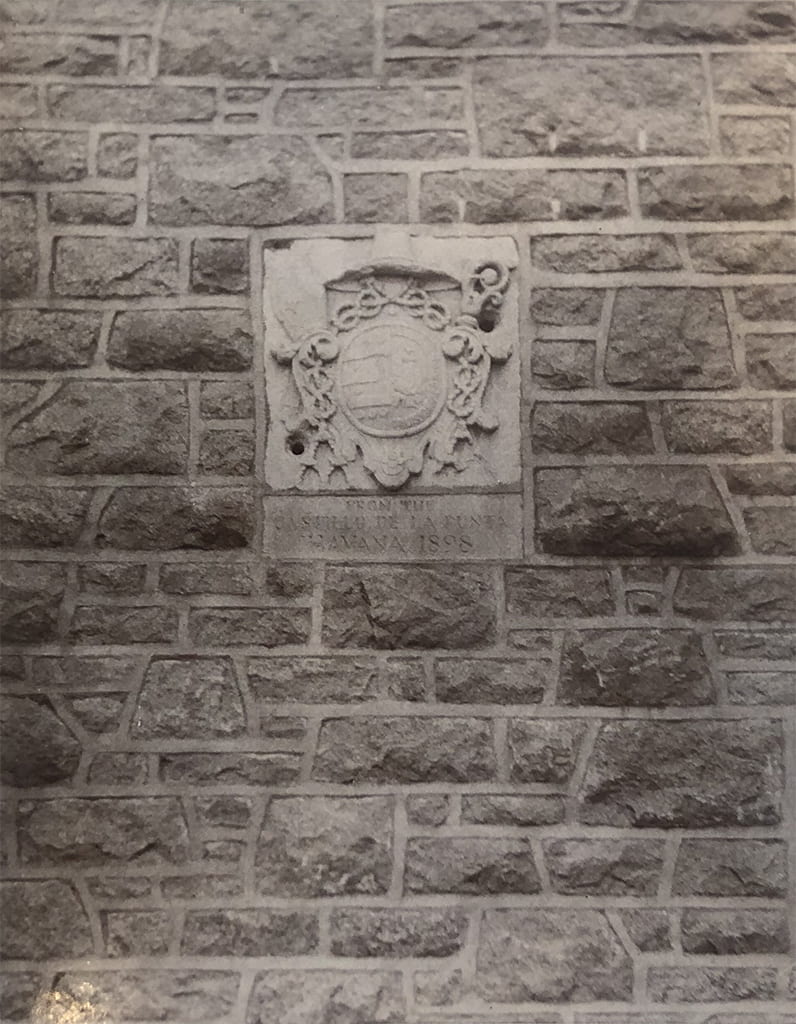Another notable feature on the facade of Brookings Hall is the Havana Stone, originally a keystone from the Spanish fortifications of the Castillo de la Punta in Havana Bay. When American military forces destroyed a section of the fort in the Spanish-American War of 1898, Lieutenant John Stafford, formerly a military science instructor at Washington University, salvaged the stone and sent it to the University. The stone was then mounted into the masonry as a monument to America’s victory in Cuba and the acquisition of other formerly Spanish territories in the Caribbean and Pacific.[66] Supported by Cope & Stewardson’s gothic stonework, the Havana Stone points to how the period’s medievalism could provide a literal and figurative foundation for imperialist ideology. For example, the Spanish-American War was commonly described as a righteous crusade, and its martial heroes like Theodore Roosevelt were compared to chivalric knights.[67]
Image credits:
Havana Stone, c. 1898 (left) and c. 1900 (right). Black-and-white photographs. Washington University Photographic Services Archives, Washington University Libraries.

